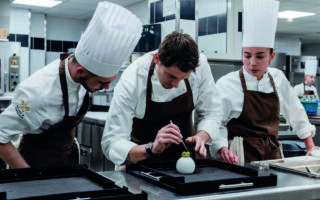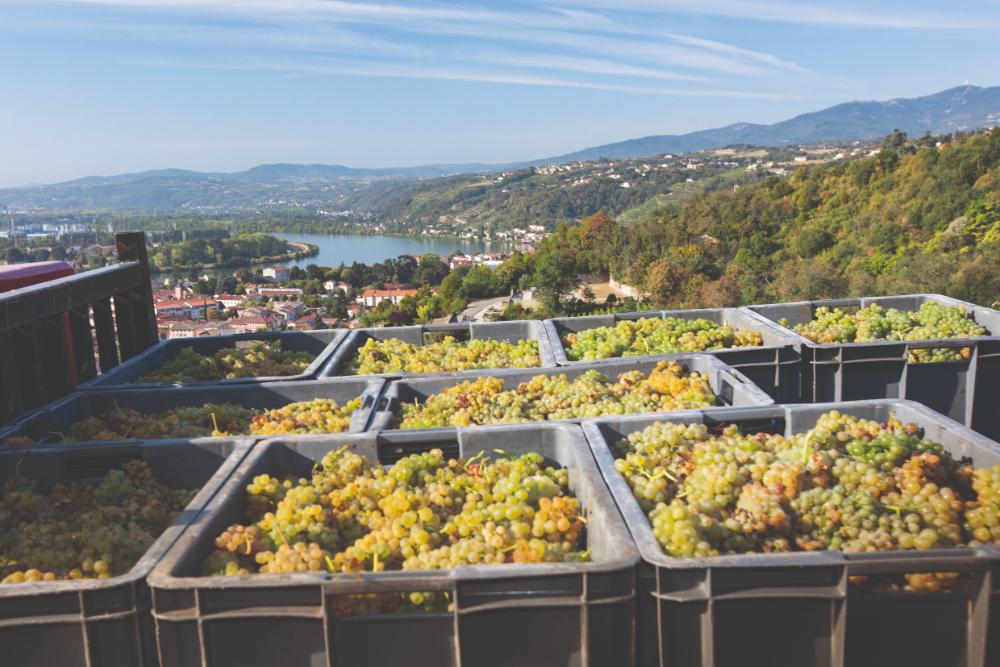
A gastronomic tour of Northern Rhone
The land of steep hills, stony soils and soul-stirring wines offers Elinor Sheridan the chance to indulge in Northern Rhône’s finest wines to accompany superb local cuisine.
Northern Rhône is a narrow, steep-sided valley where craggy hillsides blanketed in terraces of vines rise from the mighty river as it makes its way south. On the right bank, the appellations of Côte-Rôtie and Condrieu provide the ideal accompaniment to the local cuisine. After a quick breakfast of pastries and a Triomphe de Vienne pear in Lyon, a minivan pulls up and I’m introduced to Laurent from the wine tour company Rhône Trip. As we set off between the vines, he gives a great introduction to the region and its wines, explaining how the hillsides are worked by hand and each appellation is a unique expression of the region’s terroir.
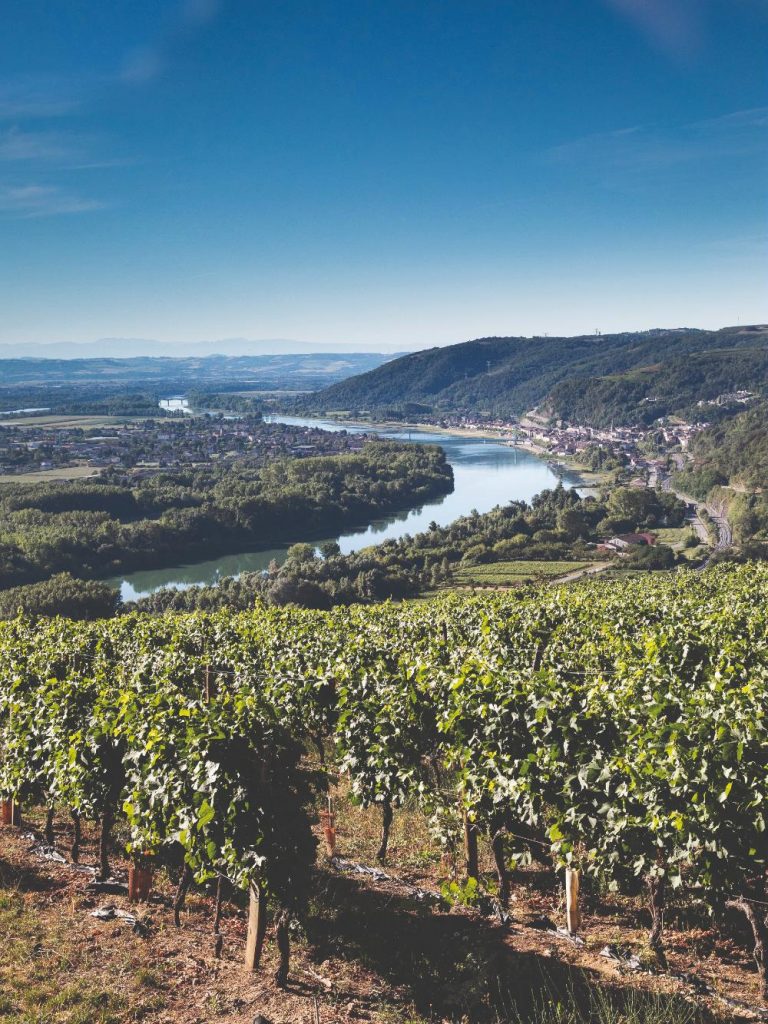
We snack on some bugnes, delicious, deep-fried pastries dusted with powdered sugar, once enjoyed in Roman times and now often prepared for Mardi Gras. When asked about the region’s foods, he tells us it’s good, hearty dishes that a sweet grandmother would cook which you’ll find here – such as poulet à la vigneronne or lapin à la lyonnaise. The caillette is a local staple, a type of meatball made from pork, spinach, herbs and spices to be enjoyed with a good bottle of red, of course.
Côte-rôtie
We follow the Rhône south from Lyon towards Vienne and the land of Côte-Rôtie, a major Syrah region and the birthplace of some of the world’s most compelling red wines made with this grape. The soil to the north in Côte Brune is dark and iron-rich, while the soil to the south in Côte Blonde is pale granite;
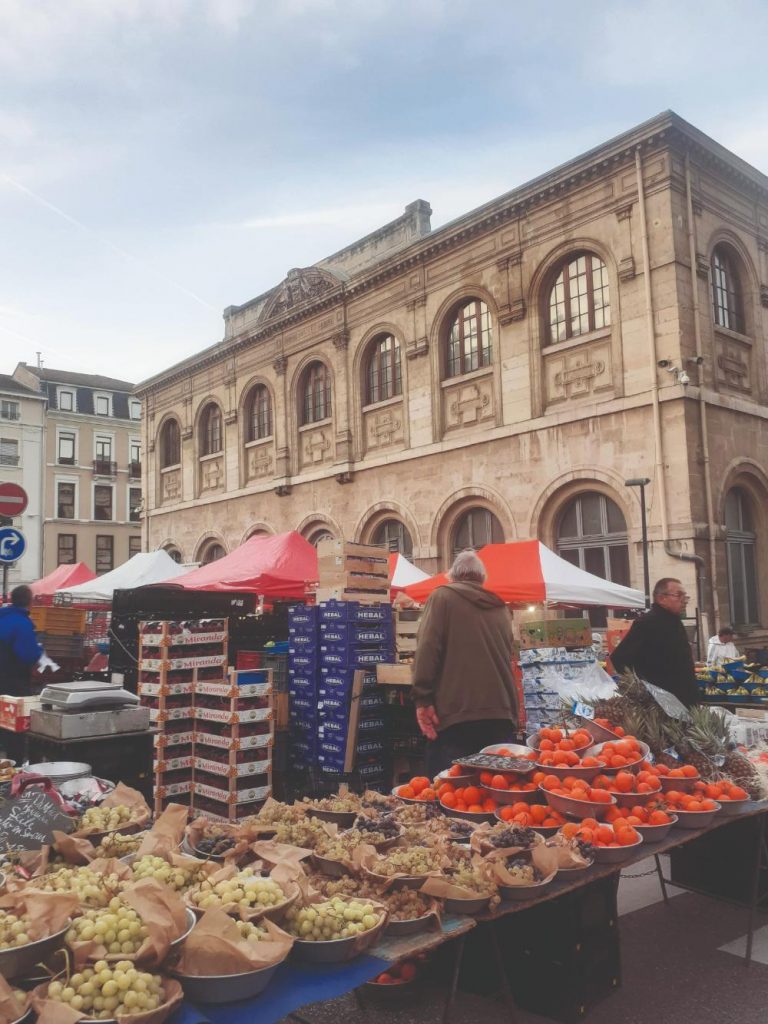
according to legend, the Lord of Maugiron (owner of Ampuis Castle) named the slopes after his daughters’ hair colours. Most Côte Rôtie wines are a blend of both, bringing together the delicate, elegant Blonde and the full-bodied Brune, which complement each other. It is one of only a few appellations that allows for the (limited) use of white wine grapes in its blend. Laurent explains that the price tags on the wine bottles are as steep as the hills the vines grow on, but this hasn’t always been the case, with a bottle of Côte-Rôtie being worth less than a kilo of the local apricots in the 1950s.
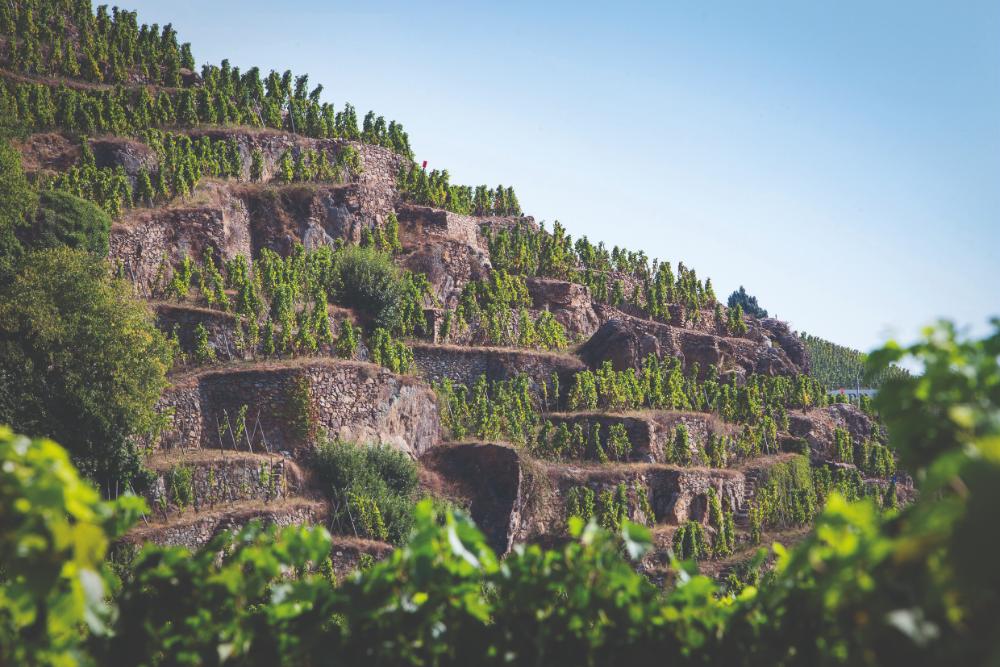
Near Limony we get a chance to taste Domaine Louis Chèze’s Bellissima, a 100% Syrah blend of the Brune and Blonde, along with a Rô-Rée cuvée which falls in the Saint-Joseph appellation. Almost entirely self-taught, Louis Chèze produces prestigious wines on an estate of more than 40 hectares in a variety of appellations, practising sustainable winemaking. Our glasses swirl in a circular motion, and the deep crimson liquid inside begins to dance, leaving viscous legs that slowly trickle down the sides of the glass.
As the wine settles, the swirling becomes slower and more deliberate, a beautiful and mesmerising ritual. Côte-Rôtie is a deep ruby colour with hints of smoke and leather along with aromas of blackberry and blackcurrant. It’s best served with hearty meals that are full of flavour such as roasted meat and game dishes or stews.
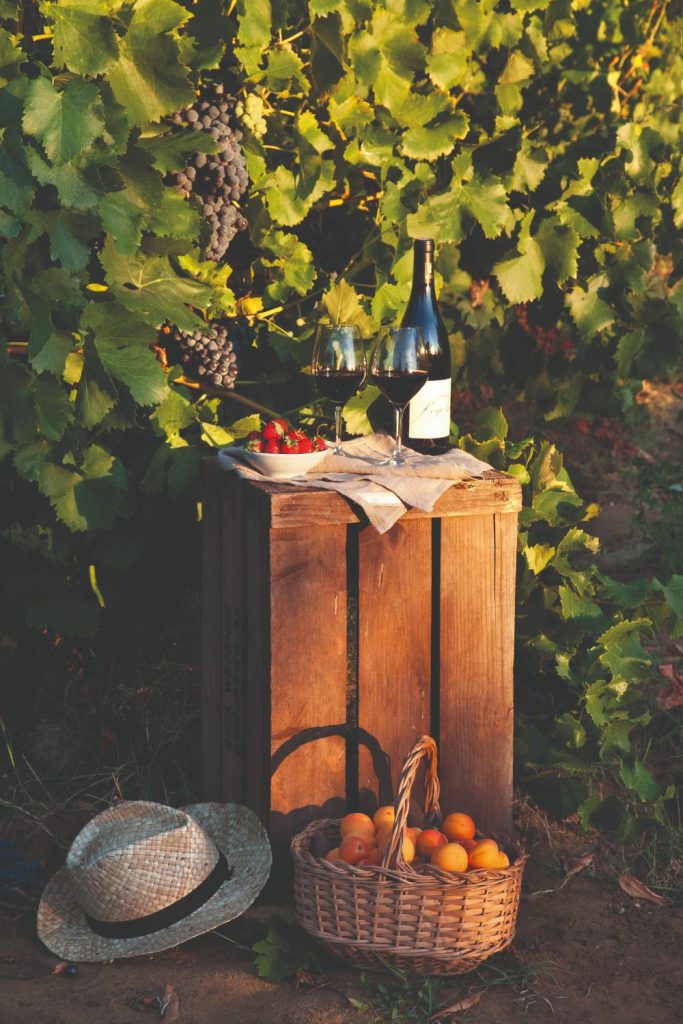
Across the river in Chonas-l’Amballan, Domaine de Clairefontaine is home to La Table de Philippe Girardon, which has been a Michelin-starred restaurant for 30 years, offering the best of local produce. We enjoy a light meal at Le Cottage bistro, pairing the braised guinea fowl with a Côte-Rôtie. As we leave the dramatic landscape of Côte-Rôtie and head south along the Rhône River, we come across another appellation, this time a white wine, Condrieu.
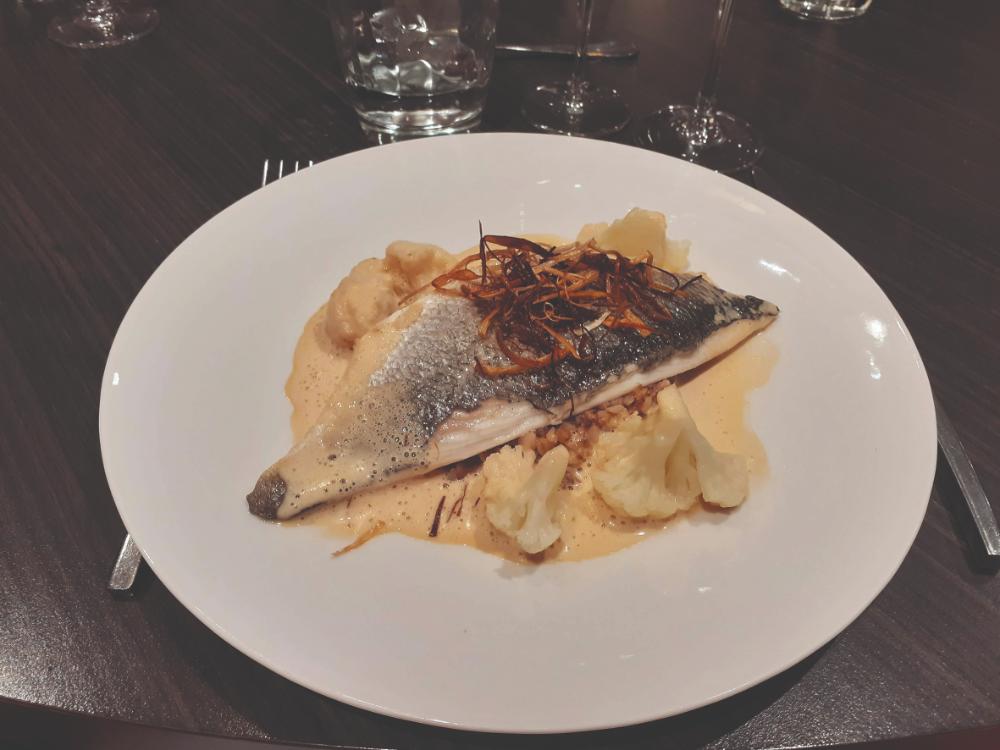
Condrieu
The name Condrieu is derived from ‘Coin de Ruisseau (corner of the stream), and it is at a meandering section of the river where the departments of Rhône, Loire and Ardèche meet that this appellation begins before extending nine miles south.
On these steep hillsides at the foot of Mont Pilat, terraces (locally known as chaillets) of vines cling on to the granite. Condrieu is made exclusively of Viognier grapes and has held AOC status since 1940. It owes much of its popularity to Georges Vernay, known as the ‘King of Condrieu’, who played a pivotal role in the global recognition of this lesser-known appellation and acted as a mentor to the aforementioned Louis Chèze. The vines are planted facing south-east, helping the rocky soil retain heat and sheltering the vines from the cold winds from the north. The average yield is famously low, contributing to its rarity and the resulting price tag, with a production of only 30,000 or so cases a year.
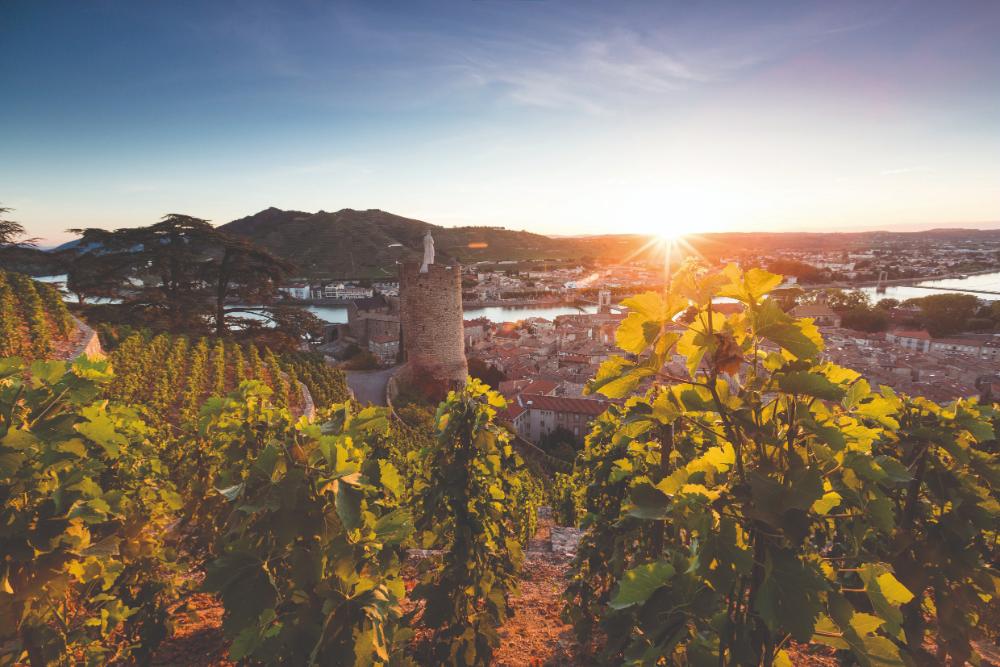
We make our way up from Chavanay along the Chemin des Vignes, catching glimpses of a lone statue against the skyline, the Madone d’Izeras, which overlooks the vines and the valley from this viewpoint. Here at Domaine Verzier we tour the estate and as we reach the Madone and her parcel of vines, it seems as if they respond to her presence and encouraging outstretched hands, the vines reaching up towards the sky and bursting with ripe grapes.
The Chante-Perdrix plot on the Izeras hillside is home to their Condrieu wines. Condrieu is a silky white wine with a powerful fragrance and a round taste in the mouth, its colour a pale gold. Fresh but very fragrant, it offers floral notes of violet and field flowers or fruity notes of mango, apricot, pear and peach. Listening to Laurent’s remarks and musings, it’s hard not to compare Condrieu to a siren’s song, luring you in with its sweet, floral notes and then ensnaring you with its velvety texture. It’s this richness that makes it marry so well with creamy and savoury dishes. Ideally enjoyed with seafood or foie gras, it also pairs beautifully well with a tangy cheese such as the local Rigotte de Condrieu goat’s cheese.
For lunch we pair a bottle of Condrieu with a delicious salmon steak with fried sweet potatoes and a warm lemon vinaigrette at Les Terrasses du Rozay, taking the opportunity to admire the landscape from their sunny terrace as we enjoy our meal.

A rich Roman history
There’s a true sense of history in this region, with vignerons always acknowledging the legacy of generations before and it is thanks to their tenacity and passion that these vines prosper despite a difficult past and challenging conditions.
The history of Rome is not a distant memory here, but a living, breathing presence that is rooted amongst the vines, and the relics displayed at the Museum of Le Caveau du Château evidence the region’s rich history. Owned by the Guigal family, this space in Ampuis is a must-visit as it allows visitors to taste a variety of wines and see the tools and processes behind the art of winemaking, including drinking vessels hailing from ancient times. Domaine Guigal is one of the most well-respected wineries in the Rhône valley and it has a rich history spanning several generations. They produce high- quality wines that showcase the unique terroir of the Northern Rhône, and their flagship Côte-Rôtie La Landonne is considered one of the greatest wines of the Rhône Valley, highly sought-after by collectors and wine lovers around the globe.

Savouring the flavours
In the evening it’s the perfect opportunity to experience the wonderful marriage between the food and wine of Northern Rhône at the remarkable Les Nymphéas Restaurant in the Domaine de Gorneton. It’s a refined restaurant that exudes luxury and here Maître Restaurateur Thomas Bernard and his team offer culinary masterpieces that are more than generous but still leave you wanting a second portion.
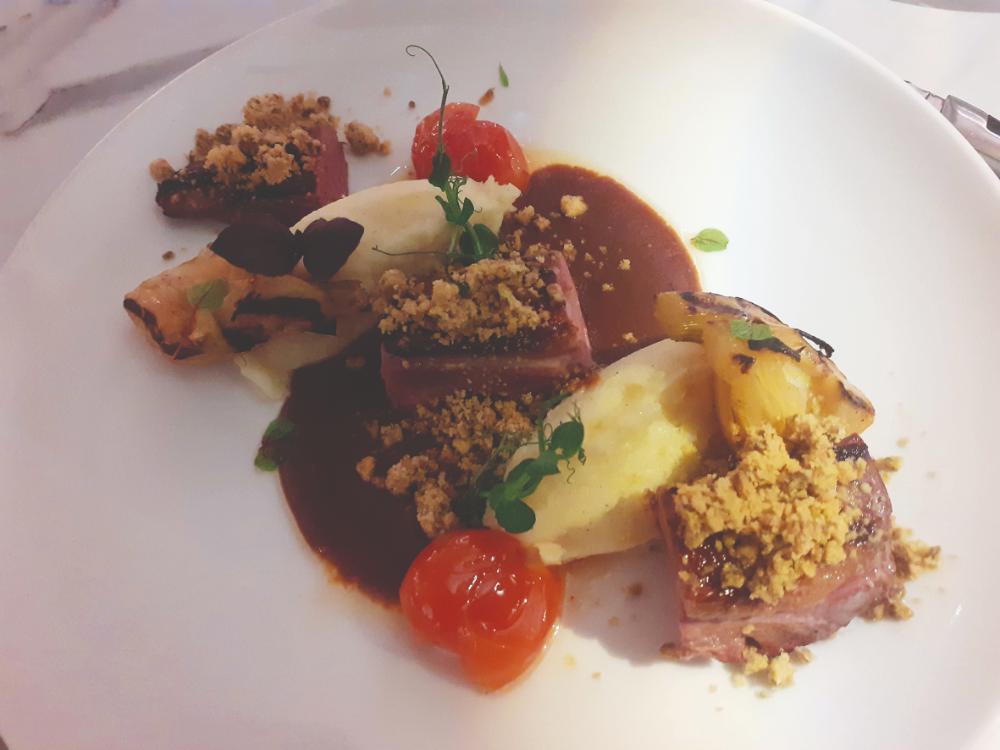
A Condrieu complements the fish and avocado amuse-bouche followed by the refreshing goat’s cheese cannelloni served cold with a homemade tomato and ginger coulis. I then enjoy a glass of Côte-Rôtie with my main course: duck infused with voatsiperifery pepper and a fig and honey sauce served alongside mashed potatoes with nutmeg and candied orange fennel plus a delectable pistachio crumble. It’s a wonderful meal beautifully paired with the region’s wines which I’ve thoroughly enjoyed learning about, all the way from the vine to the bottle.
Heading back home I now understand Laurent’s clear admiration for the winemakers and the terroir; Rhône Trip‘s guided tours are an exceptional way of discovering this authentic territory, and their guides’ extensive knowledge and insightful observations truly elevate the experience. My time spent amongst the sun-dappled vineyards that form a tapestry of green and gold on the granite slopes of Northern Rhône has shown the true beauty of this landscape and its flavours.
Latest Posts:
- Canard au sang
- Oeufs en meurette
- Le Goûter: The Sweetest Part of the Day
- Fabien Ferré: Jumping from 0 to 3 Michelin Stars
- Sardines and onions summer tart
Lead photo credit : T H E G R A P E H A RV EST IN AMPUIS, © COLOMBE PRODUCTION, ELINOR SHERIDAN, BERNARD FAVRE, SERGE CHAPUIS
Share to: Facebook Twitter LinkedIn Email
More in Auvergne Rhone-Alpes, Rhone, Wine



